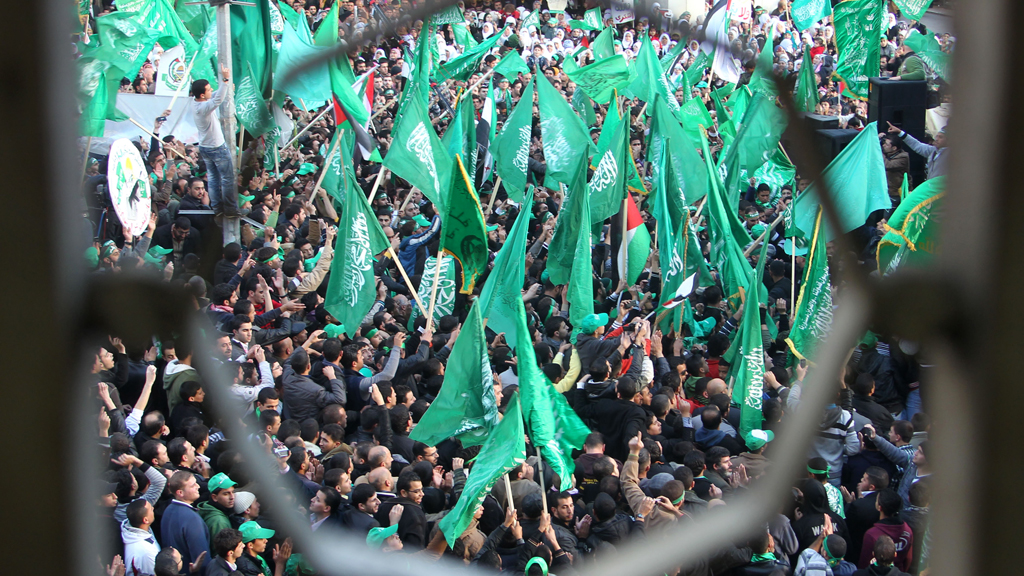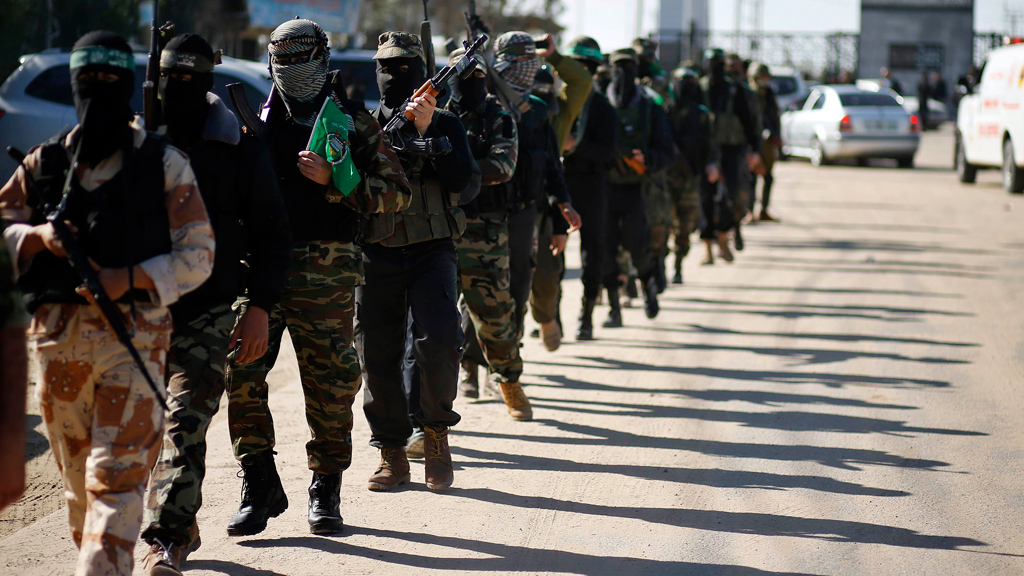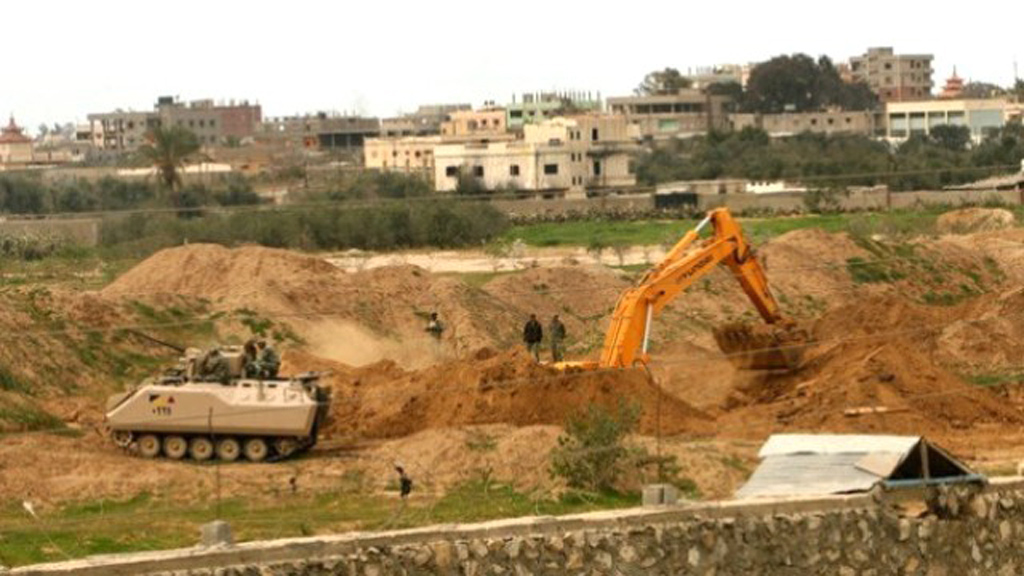Stuck in the Tunnel

The recognition of Mohammad Morsi as Egyptian president in June 2012 opened the door for Hamas to restore diplomatic relations in the region. This progress was accompanied by visits from the former Egyptian Prime Minister Hisham Kandil and the former Tunisian foreign minister Rafiq Abdelsalam in solidarity with the Palestinian cause during the Israeli air offensive in November 2012. In the wake of the Arab revolutions, supporting the Palestinian resistance had become fashionable again and Hamas finally believed to be on the winning side of life.
A year later, however, Gaza has been beset by heavy disillusionment. Egyptian President Morsi was unceremoniously deposed by the military and relations between Hamas and its former regional allies, Syria and Iran, lie in tatters: The Palestinian organization had refused to fight alongside the Assad regime and its ally, the Lebanese Hezbollah against the Sunni-dominated opposition in Syria. This is because the Syrian Muslim Brotherhood, a close ally of Hamas, is within the rebel ranks. And by pulling of Syria, organization antagonized leaders in Teheran.
Before its eviction from its headquarters in Damascus in February 2012, Hamas received about 150 to 180 million U.S. Dollars financial aid from Iran, estimates Michael Bröning, author of "Political Parties in Palestine" and senior editor of the "IPG Journal" published by the Friedrich Ebert Foundation.
Hamas without regional backing

Hamas opened its new international headquarters in the capital of Qatar, Doha. Although the Qatar government is a major donor, the Palestinian organization has lost its ideological brothers-in-arms and become isolated in the region. Middle East specialist Michael Bröning does not believe that the Gulf state plans to give excessive support to Hamas: "For Qatar, it's clear that the Gaza Strip is not the most crucial element in the new regional order."
Meanwhile in the Palestinian territories, internal political tensions prevail. The two largest Palestinian organizations formed a national unity government in 2006 that held for a few months. But even before the election year was out violence escalated between Hamas and Fatah, the most influential wing of the Palestine Liberation Organization (PLO), resulting in a fratricidal war.
Since Hamas seized control of the Gaza Strip in 2007, Fatah is preventing its reorganization in the West Bank. "One can therefore no longer speak of a broad-based Hamas infrastructure in the West Bank," states Bröning.
Catastrophic economy

The transfer of power in Egypt last summer had a disastrous impact on the Gaza Strip economy. The Egyptian military destroyed hundreds of smuggling tunnels leading to the Sinai. Omar Shaban of the think-tank Palthink, an independent institution for strategic studies in Gaza City, appraises the damage as follows: "The tunnels' trade was estimated at approximately 500,000,000 dollars annually which represents 50% of the Hamas government's budget for the year 2013. This meant that the Hamas government lost most of its tax revenues that were extracted from the tunnels' trade."
The Gaza Strip infrastructure has been hard hit as a result. In November, Hamas was forced to shut down the region's only power plant due to rising Egyptian diesel prices. More than half of the required oil, which was once smuggled through the tunnels, cannot be compensated due to the lack of financial resources. In the last month, households in Gaza waited for electricity for up to 16 hours a day.
This is just one reason why Hamas is under pressure, due to its inability to satisfy social expectations. But a swift resolution of the crisis is not in sight, says Bröning. To prevent itself falling into social disgrace, the organization is seeking to legitimize its rule in another way: "Hamas is looking for new fields of action, but as it has little room for manoeuvre these days, it is sticking to symbolic policies," states Bröning.

These symbolic policies have resulted in greater Islamic influence on public life. A law on gender segregation in schools was recently adopted. Moreover, girls and boys can no longer be taught by teachers of the opposite sex. Not that this is anything new – people in the Gaza Strip have become used to Islamic regulations such as these governing their everyday lives.
Disorganised Internet activism
Thus far, popular resentment has only been expressed in the virtual realm. A movement calling itself "Tamarrod" (Rebellion) called for protests against Hamas on 11 November but nobody showed up at the appointed time and place. The activists align themselves with the Egyptian "Tamarrod" movement. Bröning classifies them as a marginal phenomenon: "They obviously have neither a clear agenda nor a leadership. Some call for the downfall of the Hamas government, others support the government of national unity."
Profound political upheaval in the region has also resulted in divergent strategies within Hamas itself. Bröning identifies two trends within the organization: "Hamas hardliners, especially in the Gaza Strip, rely mainly on Iranian support," he says. "Paradoxically, they condemned the recent nuclear agreement. They are afraid that one day Iran might turn its back on them in the course of its international convergence. In contrast to this, the organization's former spokesman Ahmad Yusuf welcomes Iran's rapprochement with the West, because this step could be also beneficial for Hamas."
However the political leader of Hamas, Khaleed Mashaal and other moderates within the organization, most of them living in exile, have given up any hope of restoring diplomatic relations in the region at present. In Bröning's view, whether Hamas takes a radical or moderate turn depends mainly on the political actions of external players. "Two trends exist within the party. The reaction of the West will have a certain impact on the direction in which Hamas will evolve and which trend will be strengthened or weakened."
Juliane Metzker
© Qantara.de 2013
Editor: Lewis Gropp/Qantara.de